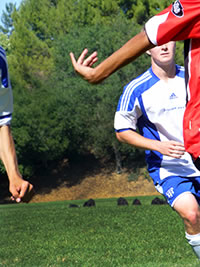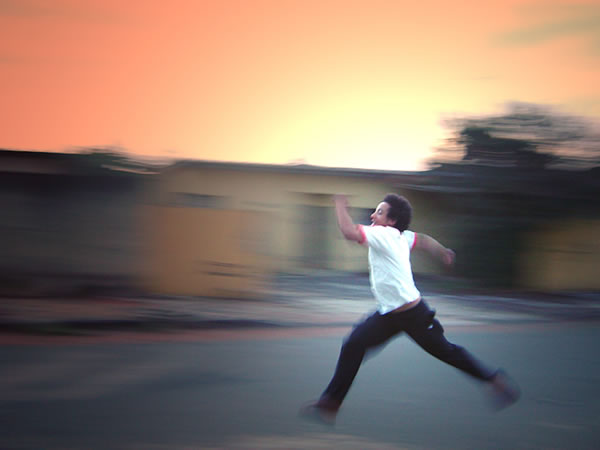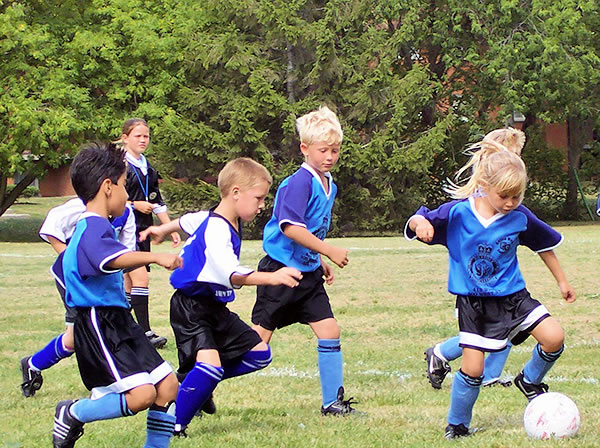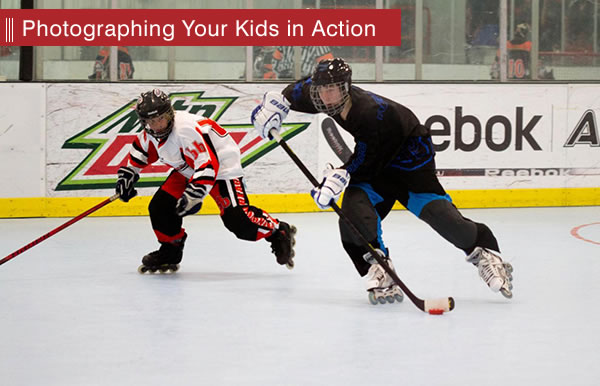Children are taking part in sports activities pretty much year-round these days. Whether it be soccer, football, basketball, hockey, gymnastics, or dance, the list is endless and most kids nowadays are signed up for several different activities throughout the year. You’ll want to be prepared to get all those great shots, especially if your child scores a touchdown or goal. But shooting still photos of a fast-moving game can be tricky. It’s definitely not like photographing still subjects. You just don’t have the time to contemplate the shot or they will be out of the frame by the time you snap. There are some easy ways, however, to get up to speed. I’ve compiled eight sports photography tips so that you can take pictures of your children’s activities without your pictures coming out as one big blur or empty shot.
1. Practice in Advance

Be prepared. This is one time you do not want to show up not knowing your own camera. To get the best images, you need to understand your camera’s features and how to use them. Practice beforehand so that you can navigate the menu like second nature. Maybe, while the kids are playing outside, you can take photos of them running around. Get shots of your dog chasing a ball or the cat going after its play mouse. By focusing on moving things, you can learn how to work the camera to your advantage. Plus, you will be ready when the big game or dance recital comes up.
2. Know the Game
My next tip may be a bit obvious, but still worth mentioning. It’s really important to have some knowledge of the game your child is playing. Most parents do follow the activities closely, but if you want to capture a winning shot, you really need to know what to expect. If you have an idea where the game is going, then you can anticipate some great pictures.
3. Fast Shutter Speed
The key to action shots is speed and if you don’t use the right setting, you will never have enough time to get the image. A fast shutter speed is going to help you catch the action. Today, many cameras, not just the really expensive ones, have a Sports Mode to set a faster shutter speed and freeze the action. Alternatively, you can use the manual settings: set the exposure for Shutter Priority (either S or TV, depending on your camera model) and adjust the shutter speed manually to 1/250th of a second and even on up to 1/1000th of a second. Use the maximum aperture and an ISO of 120-160 for a bright, sunny day; ISO 200-320 if you’re in the shade.
Another option is to use your camera’s Continuous Mode, also called Burst Mode. It will quickly fire off multiple images, one right after the other in rapid succession, giving you a better chance of getting just the right shot.

4. Learn to Pan Like a Pro
Panning is a cool technique that keeps your subject in focus but the background is blurred, which creates a sense of action (see the image above). The key is to use Shutter Priority and a slow shutter speed of around 1/30 or 1/15. You might need to bump it to 1/60 or 1/125. Generally, the faster the action the faster the shutter speed you will need. The basic idea is to start with your camera pointed to the left and you follow your subject as he/she moves toward the right and snap the shot about the midpoint. Keep the camera moving as you take the picture. Make a smooth movement as you sweep, keeping the camera steady.
A colorful background will make a cool-looking blur. It’s a somewhat difficult technique to get right, but keep practicing. Once you have it mastered your friends will be impressed with your amazing shots.
5. Pay Attention to the Background
One of the most difficult things to gauge when taking sports photographs is the background. You don’t have much choice, really. When the play happens, whatever is there is there. But at the same time, you can try to be aware of what is happening in the background. Watch out for scenes that are too busy, or if the field is right next to the parking lot so that the background content doesn’t take away from the real action. Get closer or use your zoom. Typically, look for backgrounds that complement or highlight the foreground. This is another reason why you want to be prepared when you’re photographing your children’s sports activities.

6. Take Lots of Photos
The good thing about digital is you can always erase the bad shots. Shoot as many photos as possible and then pick out the best ones. Don’t be afraid of your camera or your photo-taking skills. You will only learn by experimenting with different angles and different focuses. Get into the thick of it and move as close to the action as you’re permitted.
7. White Balance
One last point about lighting and colors. Often the camera’s default setting is AWB (auto white balance). This is not the best option if you’re taking outdoor photos on a sunny day. Instead, switch to Daylight, which tends to include more surrounding colors. Your images will apt to be less overblown from the sun washing everything out.
8. Tell the Story of the Game or Event
Finally, take some photos before and after the game. A couple of nice close-ups of the team members saying hello and goodbye. Get the team to pose for a fun shot doing something different than just standing. Make sure everyone is included and the shot is good clean fun. If the team doesn’t have an official photographer, maybe you can offer to take the individual member’s headshots for the roster on the website or program booklet. Taking a picture of the team’s banner or another signifying item would work well to place on the team website, too.
If you want to complete a CD or DVD or even make a photo book for your children to have when they are older, or if you are maintaining a website, don’t forget to take pictures of things going on around you. For example, the scoreboard at key moments, the heightened excitement of the team at playoffs, team huddles, high-fives, coach talks and encouragement, the sidelines, and the crowd cheering and roaring. These kinds of shots will tell the story of the game without needing a video recorder. They will make beautiful lasting memories for your family.
I hope these sports photography tips help you take better photos of your kids’ activities.




